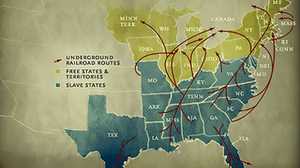Women: War and Writers
Three women who served during the war in very different ways.

Rose O'Neal Greenhow showed her loyalty to the Confederate cause by becoming a spy. She was born into a wealthy Maryland family and counted among her acquaintances high political officials such as John C. Calhoun and James Buchanan. Greenhow was vehemently pro-slavery, and took advantage of societal assumptions of women's innate goodness to spy for the Confederate army. Her major accomplishment was transmitting information on the movement of Union troops to General Beauregard just prior to the Battle of Bull Run. Confederate President Jefferson Davis himself credited her with the victory.
In July 1861, she was arrested and confined to her home, which became popularly known as "Fort Greenhow," and remained there with her eight-year-old daughter until the following January, when she was removed to Washington, D.C.'s Old Capitol Prison. Even from this prison, she managed to continue her espionage activities. Later that year, she was exiled to the South, where she was enthusiastically greeted as a Confederate heroine. She next went to Britain and France to circulate propaganda for the Confederate cause, in the process publishing her prison diary, My Imprisonment and the First Year of Abolition Rule at Washington.
In 1864, after a year abroad at the courts of Queen Victoria and Napoleon III, she boarded a blockade-running ship for home. When she attempted to escape the Union gunboat that pursued her ship, her rowboat capsized and she was drowned. In October of that year, Greenhow was buried with full military honors for aiding the Confederate war effort.
Mary Ann Bickerdyke was one of the first women to attend and graduate from Oberlin College. She went on to study nursing, and volunteered her services at the outbreak of the Civil War. She began by significantly improving an inadequate army hospital in Cairo, Illinois, and eventually became matron in November 1861. Unlike most female nurses, Bickerdyke carried out her work on the front lines of the battlefield. After she joined the U.S. Sanitary Commission, her courage and resourcefulness at aiding the wounded drew the attention of Generalm Ulysses S. Grant. He gave her a pass to travel freely within his command, and she followed his army down the Mississippi. She then joined General William Tecumseh sherman's march through Georgia, creating hospitals as she went and demanding medical examinations for the soldiers. A total of 300 hospitals were erected under her influence. She became famously known in Union army camps as "Mother" Bickerdyke, attesting to the devotion and care she brought to her work.
Mary S. Peake Among the many Northern women who followed Union armies to educate freed men and women was a significant number of African Americans. One of the first was Mary S. Peake, an African American woman born free and educated in Virginia. By September 1861, she had already opened her own school in Hampton, Virginia, a town that had recently been evacuated by the Confederacy. There she taught to all ages. Her effectiveness attracted the attention of the American Missionary Association, which lent her school financial support as well as material supplies. In 1862 she fell ill with tuberculosis, and yet still managed to continue teaching from her bedside. In February, the illness killed her, at the age of 39. At that time, her school was educating 53 students during the day and 20 at night.
Literary Women:
Women writers challenged the public to think about slavery and women's equality differently through active careers in writing, publishing, and editing. Read profiles of three who promoted the abolitionist and women's rights movements via their literary efforts.
Margaret Fuller
Margaret Fuller's father drove her to achieve academically from almost the day she was born. She withstood her father's grueling course of study and went on to become one of America's foremost female intellectuals. Born in Cambridge, Massachusetts in 1810, Fuller read English at age two and Latin at six. In her teens, she could discuss classic literary and philosophical works with ease.
After a brief career as a teacher, Fuller moved to Boston, where from 1839-44 she led "conversations" for women on intellectual topics. During that time, she also published a translation of Eckermann's Conversations with Goethe. Impressed by her writing abilities, Ralph Waldo Emerson and his Transcendentalist colleagues invited her to edit their magazine, The Dial.
In 1844, Horace Greeley asked Fuller to join his New York Tribune as a literary critic. Later, she served as European correspondent for the Tribune. In each case, she was the first woman to hold such a position. In 1845, Greeley published Fuller's Woman in the Nineteenth Century, which argued for women's equality in all aspects of life.
When the Italian revolution began in 1847, Fuller married the Marchese Giovanni Angelo Ossoli, a young republican, and headed to the battlefront. On her return to America in 1850, the ship carrying her, her husband, and her son sank in heavy seas. Neither Fuller's body nor her manuscript about the Italian Revolution were ever found.
Harriet Beecher Stowe
Hailed as an abolitionist hero in the North and condemned as a virulent propagandist in the South, Harriet Beecher Stowe defined the world's image of slavery with her international bestseller, Uncle Tom's Cabin. Born the daughter of prominent minister Lyman Beecher in 1811, Harriet began her career as a teacher. But after her marriage to Calvin Ellis Stowe, she started to write seriously.
Uncle Tom's Cabin was first published in 1851-52 as a serial in an abolitionist newspaper called the National Era. It told the story of a slave family visited by all the cruelties of the "peculiar institution." The story was both a heartbreaking portrayal of the suffering of the slaves and an eloquent plea for whites to assume their Christian duty and end slavery forever.
Published in book form in 1852, Uncle Tom's Cabin sold 300,000 copies in the first year after publication. Soon Harriet Beecher Stowe was touring England as a bona fide celebrity. But if she was regarded as an abolitionist hero in the North, Southerners reserved for her their deepest hatred. Uncle Tom's Cabin would contribute significantly to the partisan sentiment between North and South. Abraham Lincoln himself even referred to Stowe as "the little woman who made this great war."
Lydia Maria Child
As a young woman, Lydia Maria Child wrote diversely, on topics ranging from historical novels and domestic tips for housewives to a magazine for young children. Most popular of her early works was The Frugal Housewife, an international bestseller she published in 1829. But after meeting abolitionist William Lloyd Garrison in 1831, Child dedicated her talents to one cause: ending slavery.
Child's An Appeal in Favor of That Class of Americans Called Africans, published in 1833, presented a history of slavery and called on society to dismantle the slave system. From 1841-43, Child served as an editor of the National Anti-Slavery Standard, an abolitionist newspaper. She also edited Harriet Jacobs' Incidents in the Life of a Slave Girl, one of the most renowned first-person accounts of slave life.
Child promoted abolition not only by writing and editing. Her home in Medford, Massachusetts, was a stop on the Underground Railroad. And after John Brown's abortive raid on Harper's Ferry, Child wrote letters on Brown's behalf to the Virginia governor and helped raise money for the family of Brown and his men. After a long career promoting abolition and freedmen's rights, Child died in 1880, at age 78.







